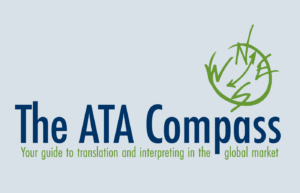Inclusive Language Speaks to Everyone

When it comes to your marketing strategy, it’s important that your content speaks to as many people as possible. A powerful way to achieve this is to ensure that you use inclusive language. Translating your messages into other languages is a great way to make them more accessible. But knowing your audience and speaking to them in their language, both figuratively and literally, is key. Continue reading to learn how your marketing strategy can use inclusive language, both in your original message and any translated content.
Inclusive Marketing from the Ground Up
To ensure inclusivity in your communications, your strategy should include certain considerations from the get-go. As you are crafting your content, avoid language that only applies to one specific group, identity, race, gender, socioeconomic status, or life experience, as this can alienate and even offend your audience. Consider the wide range of people who could potentially interact with your content and what language would recognize them and their identity, culture, and experiences. Starting your communications plan with a broad audience in mind will help you avoid potentially offensive language and unnecessary assumptions that alienate your audience.
Consider writing your content in a way that speaks to, acknowledges, and shows respect for as many people as possible. For example, you’ll want to check your writing for words that unnecessarily assume a person’s gender. Aim for gender-neutral terms such as “folks,” “everyone,” and “people” for groups – and avoid gendered job titles, opting instead for inclusive ones such as “salesperson” or “spokesperson.”
Take Inclusivity Further with Translation
Once your content is inclusive for your target audience, consider taking your message even further with professional translation services. By translating your content, you ensure that the message will be accessible to an even broader audience. Customers are much more likely to interact with and have confidence in companies and brands that provide messaging in their native language.
Remember that inclusive language applies to translations, too! Your translator should be mindful of the inclusive language in the English content, and prioritize the same inclusivity in their translation. This will likely mean that your translator will find creative solutions to avoid unnecessary gendering and other assumptions about your readers.
The American Translators Association’s Language Services Directory is your go-to source for finding a professional translator to work on your inclusive language marketing content. With your translator, you can review the use of inclusive language in the source text and discuss how this will be carried over into the translated text, ensuring that the content is accessible and welcoming for as many people as possible.
Be sure to review the following with your translator, and consider creating a style guide or glossary for:
- Job titles: do they assume a specific gender?
- Names or groups of people: is anyone excluded from this group?
- Assumptions about the reader: does the content recognize and validate people from different life experiences and backgrounds?
This article by Ray Valido in The ATA Chronicle is a great resource for learning more about the close ties between diversity, identity, and language: “Words Matter, Identity Matters: Translating the Vocabulary of Diversity.” Valido writes, “Does identity play a role in how we translate? The short answer is yes. As we go about the work of translation, we bring far more than the skills we’ve learned. We bring a lifetime of experiences along with attitudes that were formed in childhood and beyond. We come to our work with assumptions and biases embedded in the cultures of our families and communities beyond what we may realize. The way in which we render words in a target language is affected by our histories, perspectives, and biases, whether we’re aware of them or not.”
More Inclusivity, More Reach
Remember: the more people feel included and recognized in your content, the better. Language is a powerful tool that, when used with inclusivity in mind, can help you engage with a wide audience. And if you’d like to reach even more people, find a professional translator who can integrate inclusive language in your translations and take your content to the next level.
Search the ATA Language Services Directory to find a professional translator for your inclusive marketing content.
By Meghan McCallum
About the Author
 Meghan McCallum is an ATA-certified French to English translator and writer specializing in corporate communications, marketing, and international development. She is also an active volunteer for the American Translators Association. The American Translators Association represents almost 9,000 translators and interpreters in more than 100 countries. To hire a translation or interpreting professional, please visit www.atanet.org/directory.
Meghan McCallum is an ATA-certified French to English translator and writer specializing in corporate communications, marketing, and international development. She is also an active volunteer for the American Translators Association. The American Translators Association represents almost 9,000 translators and interpreters in more than 100 countries. To hire a translation or interpreting professional, please visit www.atanet.org/directory.
Language Services Directory
Subscribe to The ATA Compass
Connect with The ATA Compass
Recent Posts
Why You Should Use a Certified Translator or Interpreter
Choosing a Certified Professional is the Smart Choice A certified translator or interpreter ensures effective, accurate, and culturally sensitive communication that truly bridges the gap between languages and cultures. Accuracy…
Read MoreLanguage Services Directory
Start Your Search ATA’s Language Services Directory includes a list of all ATA members of individuals, as well as companies. Need help finding the right professional? Professional translators and interpreters…
Read MoreBuying Language Services
Guide to Buying Translation Services Translators help power the global economy, working with businesses, governments, non-profits and individuals. Translators work with the written word. The ATA Guide to Buying Translation…
Read MoreFind a Translator or Interpreter Near You
Searching for a Nearby Translator or Interpreter? Whether you require accurate document translations, real-time interpreting for an event, or specialized industry expertise, finding the right professional near you has never…
Read MoreThe ATA Compass
Want to reach more customers, grow your business, and improve your bottom line? The ATA Compass publishes articles and provides resources to show you how language professionals can help you…
Read MoreTranslator vs. Interpreter
Watch a Day in the Life of Translators and Interpreters See how translators and interpreters work in this short animated video. Translators do the writing Translators work with the written…
Read More






